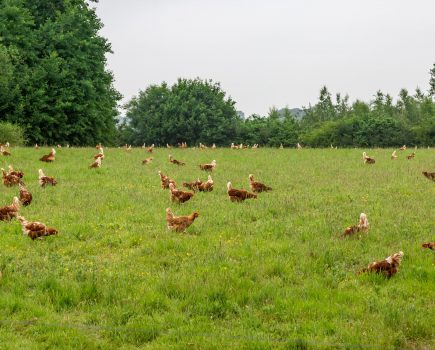Dust bathing is an important activity for chickens. It is natural part of their grooming activity, as Julie Moore explains
We have all witnessed our hens rolling around in the dirt — normally in our recently planted flower beds, kicking up clouds of dust amidst clucks of sheer pleasure. But have you wondered whether this is normal behaviour with legs and wings in the air and heads barely jutting above ground level, or perhaps that the hens are lacking a little something, which you, the poultry keeper, should provide?
This behaviour, known as dust bathing, is quite natural and forms part of the grooming ritual of chickens. Generally, a hen will take a dust bath every other day and each bath will follow the same pattern.
A dust bath is split into two distinct stages: firstly the tossing stage followed by the rubbing stage.
The tossing stage involves a cycle of the hen raking the ground with her beak, scratching the soil with her leg, rolling her head in the dirt and shaking her wing while her feathers are fluffed up allowing the dirt to penetrate to her skin. This cycle is repeated many times. However, the most striking action of this stage is wing shaking, involving the hen lying on her breast whilst she scratches both legs back and upwards kicking up clouds of dirt whilst her wings are outstretched. This stage generally lasts between 10 and 15 minutes. By the end, the hen will have created a bird-sized hole.
Occasionally, the hen will end her bathing activities here and will simply leave the ‘bath’ and remove the dirt by shaking her feathers.
Normally, the hen will then continue to the second stage of bathing. In the rubbing stage, the hen will hold her feathers close to her body, lie on one side and rub herself all over in the dirt, pushing off with one leg against the ground, the side of the hole or even another hen. Rubbing takes between 15 and 20 minutes to complete and may be interspersed with short bouts of tossing, especially if there are small lumps of material in the bath which have become caught in her feathers.
Dust bathing serves a number of purposes, primarily to remove old oils from feathers. Oils produced by the preen gland (a small pimple found at the base of the tail and after the last vertebrae on the back) are collected in the hen’s beak and spread over the feathers as the hen preens. The oil cleans the feathers, keeps them moist and flexible whilst also improving insulation and water-proofing properties. After a few days, the oils oxidise, losing their effectiveness and are thus removed during dust bathing. Where birds have been deprived of dust bath facilities, the feathers lose their fluffiness as the oils build up. When access to a dust bath is then given, a hen will bathe more frequently until her oil levels return to normal.
Invariably hens take dust baths at around noon or during the early part of the afternoon i.e. the hottest part of the day. By digging down to the damper soil they are able to work the cooler dirt particles into their feathers to help maintain a cool body temperature.
Dust bathing also helps to keep external parasites such as lice and mites at bay. The dirt not only helps to remove the oils that the parasites feed on but also suffocates them.
There is a social element to dust bathing. Although a hen will bathe on her own, hens seem to prefer to turn it into a social group activity, even managing to synchronise the tossing and rubbing stages. The pecking order will still be enforced with the top hens claiming the best loose dirt.
Where birds are kept free-range, they’ll choose their own areas to create a dust bath, even if this means trying to uproot a tree or digging up the lawn!
If birds are confined to a run, it’s a good idea to provide a dust bath area away from food and where it won’t get wet. Likewise, for free-ranging hens, consider providing bathing facilities for them in the event of inclement weather when their own creations will be useless. Indoor dust baths are always met with great enthusiasm on rainy days, normally resulting in a queue dictated by the pecking order. Not only does it make the hens happy, it relieves any boredom, thus benefiting their health both physically and mentally.
A dust bath is easy to provide and inexpensive — it’s likely that you will have suitable materials at hand or they can be acquired for little outlay. You can make a frame yourself from recycled wood or use an existing container such as a cardboard box, old tyre or cat litter tray. The ideal materials to fill the bath are sand, dirt and wood ash. The wood ash should be sifted to remove any small lumps of charcoal which can damage feathers. As wood ash is rich in vitamin K, calcium and magnesium you may find your hens eating the ash as they bathe!
Simply mix well equal parts of sand, dirt and wood ash (or 50% sand and 50% dirt if wood ash is not available) and fill your container three quarters full. Check your dust bath regularly to clean out droppings and dead parasites and then re-fill it.
Dust bathing is an important behavioural ritual. By providing a dust bath area, you’ll not only be contributing towards the health and welfare of your hens, you’ll also hopefully deter them from digging up your flower beds!







